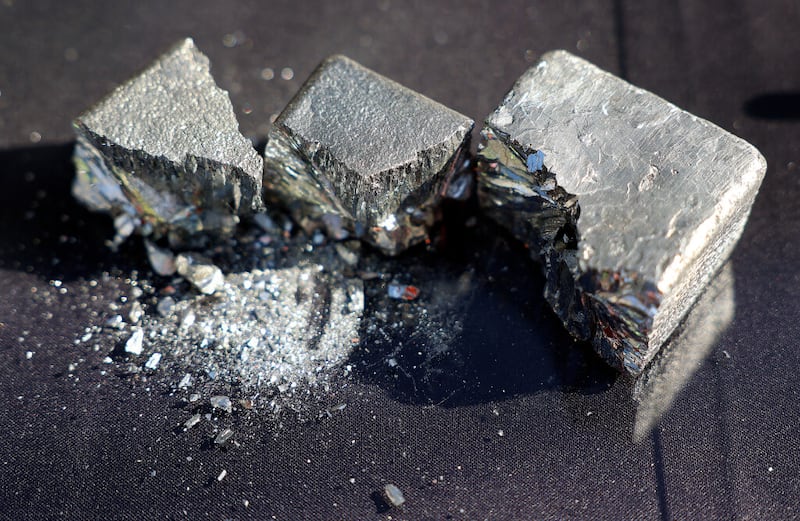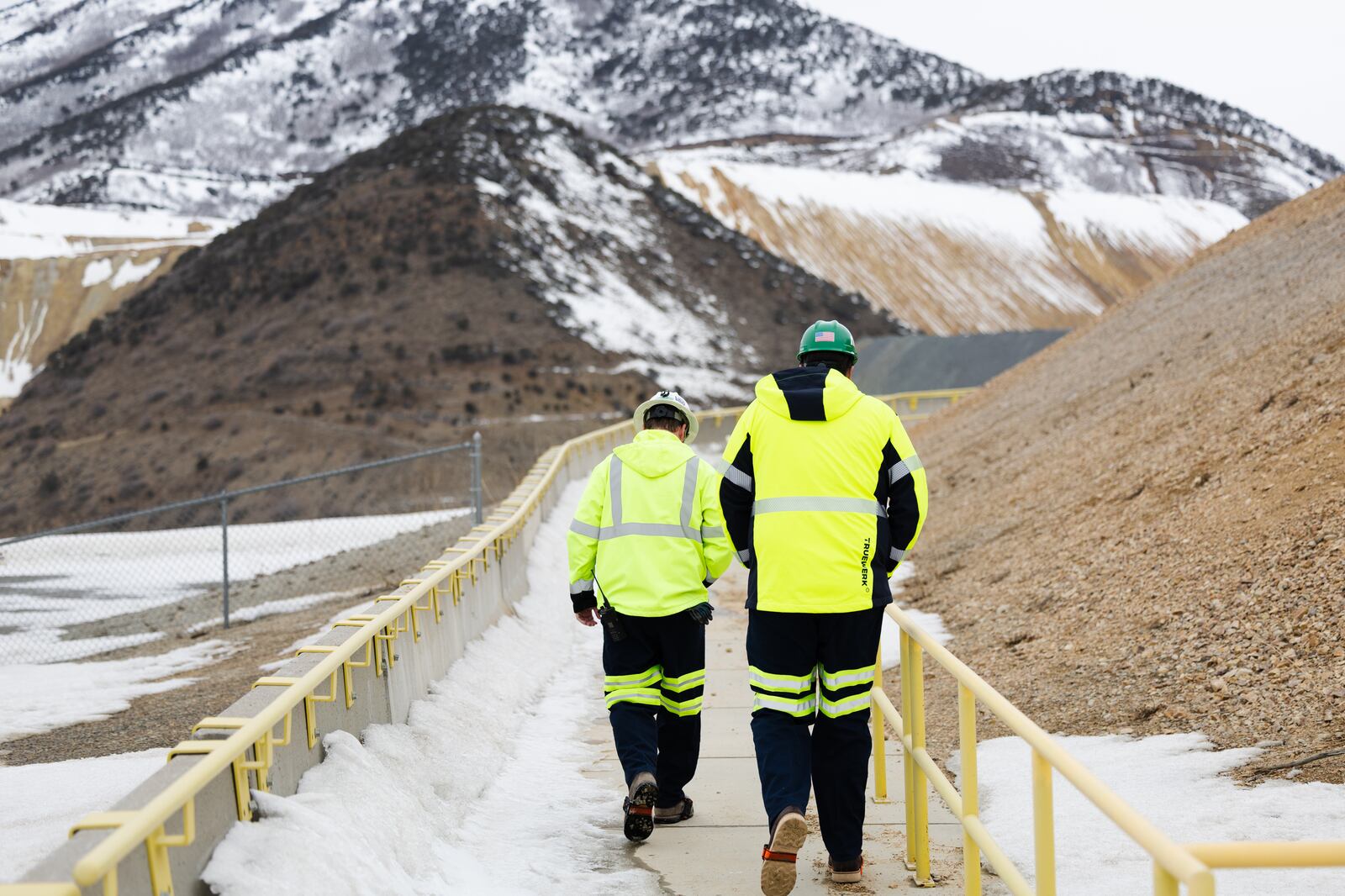This story appears in the April issue of Utah Business. Subscribe here.
One of the rarest elements in the world is being recovered in Utah, and it’s one that some say is instrumental in meeting demand for green energy products like solar panels.
Tellurium is used in copying machines, to color ceramics and glass, and to help make durable rubber products, but its most promising use is in solar cells. Tellurium and cadmium combine to form a compound with “enhanced electrical conductivity,” so “a thin film can efficiently absorb sunlight and convert it to electricity,” according to the U.S. Geological Survey (USGS).
In 2022, Rio Tinto began the process of recovering tellurium at its Kennecott mine on the west side of the Salt Lake Valley, from which copper has been mined for over 120 years. In 2023, it was one of just two active refineries recovering the element in the United States. Most tellurium recovery worldwide takes place as a byproduct of copper mining, and there are no tellurium-specific mines.
China produced about two-thirds of the global output of tellurium in 2023, according to a USGS report from early this year. But the United States’ estimated net import reliance for tellurium, which estimates what percentage of the demand is met through imported materials, dropped sharply last year.
According to the report, the net import reliance for tellurium was 95 percent in 2019 and 2021 and 75 percent in 2020 and 2022 but dropped to 25 percent in 2023.
With so few locations involved in tellurium recovery, Rio Tinto estimated in April 2023 that Kennecott would become the sixth-largest producer of tellurium in the world — contributing roughly 20 tonnes of tellurium a year, around 3 percent of the global supply. Only 580 tonnes of tellurium were produced globally in 2021, the company stated. For comparison, 21 million tonnes of copper were produced in the same year, according to Statista.
Rio Tinto Chief Advisor of Research & Development Saskia Duyvesteyn says the plant is performing “within the ranges that we would anticipate” in regard to tellurium recovery. Rio Tinto had made a previous effort to extract tellurium in Utah, but Duyvesteyn explains that the company “really struggled with the operational aspects of it.”
“From a purely economic basis, it was a challenge,” Duyvesteyn says. Now, the company is turning a profit on extracting the brittle metalloid, but “it’s not a lot of money.”
Why invest the effort? It is about being a partner for the U.S., she claims.

And there’s definitely a need there, according to the USGS. Listed as a critical mineral by the U.S., “there is little reliable information about specific deposits and primary production sources,” a USGS report states.
Not much is known about tellurium’s effects on humans either, if there are any, according to USGS Research Geologist Robert Seal, due to its low abundance in Earth’s crust. “More research is needed,” Seal says, adding that he would not expect the recovery process to enhance toxicity.
The USGS report states that “the more significant human health risks associated with tellurium production are found with the broader aspects of mining porphyry copper and [volcanogenic massive sulfide ore] deposits.”
Mines come with environmental concerns, including potential groundwater pollution and negative effects on fish and wildlife. But a commitment to green energy requires mining, Seal says.
“The energy transition will require commodities derived from mining,” he explains. “It is the only path forward if society wants to reduce greenhouse gas emissions.”
The mining industry continues to try and improve its environmental practices, Seal states, adding, “The public seems to have limited awareness of this commitment of the mining industry.”
Paul Saunders, a senior advisor and member of the board of directors at Energy Innovation Reform Project, referenced a report from the World Bank Group that stated in order to reach climate change goals of 1.5 to 2 degrees Celsius outlined in the Paris Agreement, worldwide production of graphite, lithium and cobalt would need to be increased by 450 percent by 2050, with serious increases in other minerals required as well.
“It’s the only way to build the systems that we need to produce that kind of energy,” Saunders says. “That’s a lot. That’s a lot of additional material. You need a lot of new mines everywhere around the world to produce all of that.”
At this existing mine — the second-largest producer of copper in the U.S., according to Statista — it’s a win-win.
“It may not be the highest from a revenue perspective, but from the perspective of critical minerals recovery and really being a partner in domestic production of critical minerals,” Duyvesteyn says. “How do you put a dollar amount on that?”

